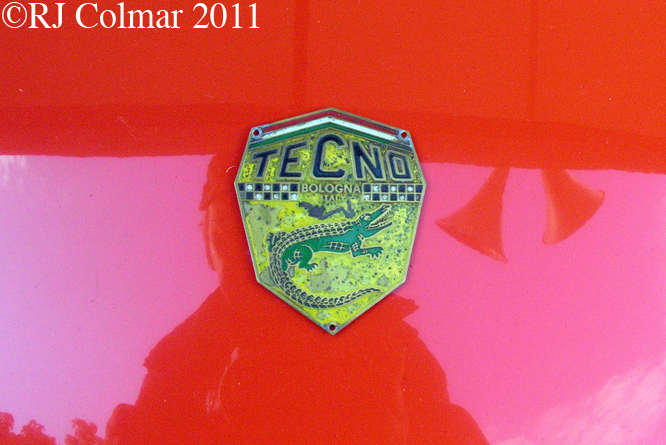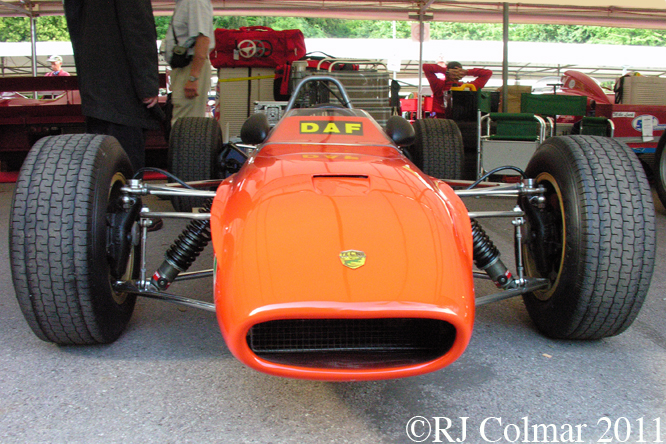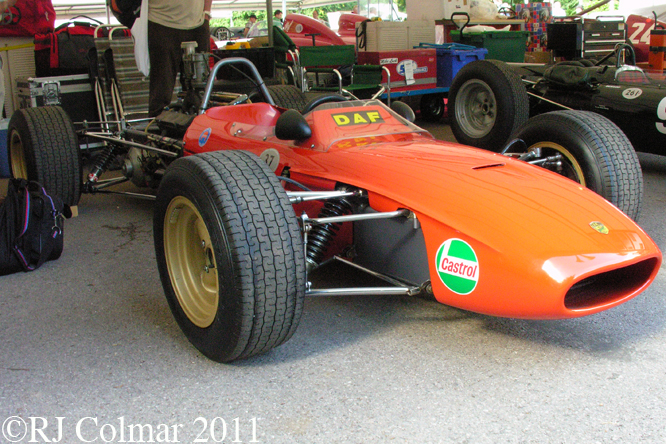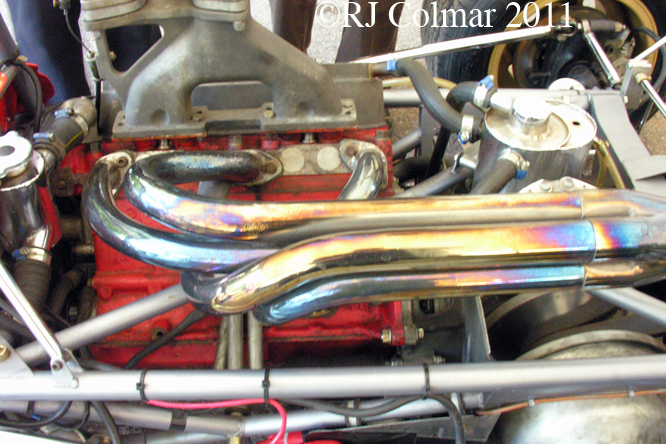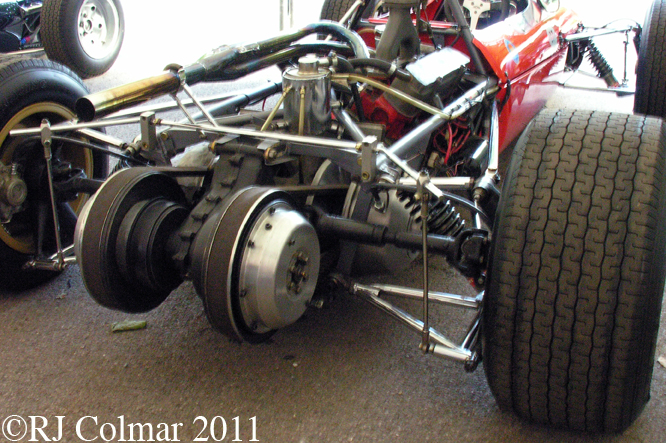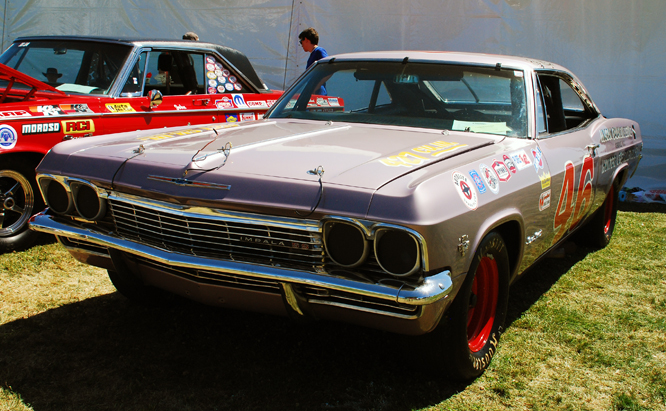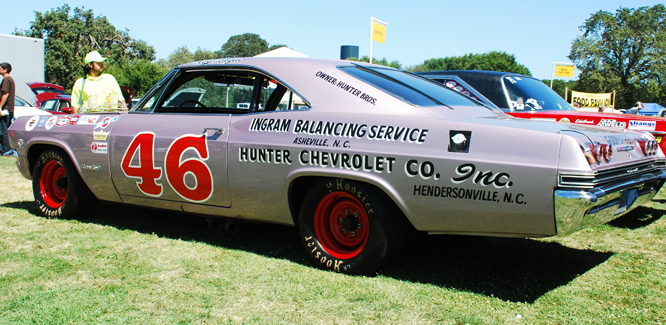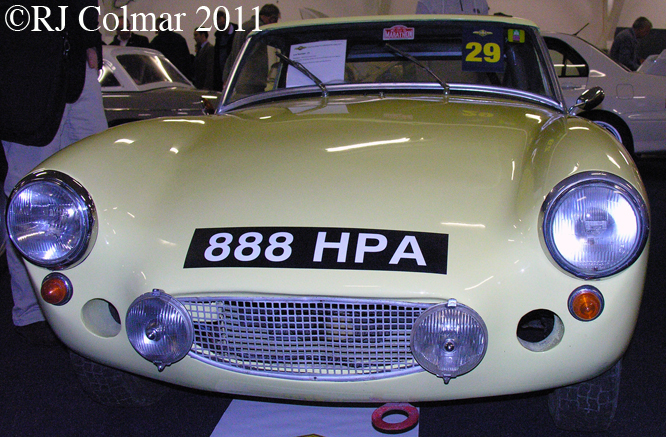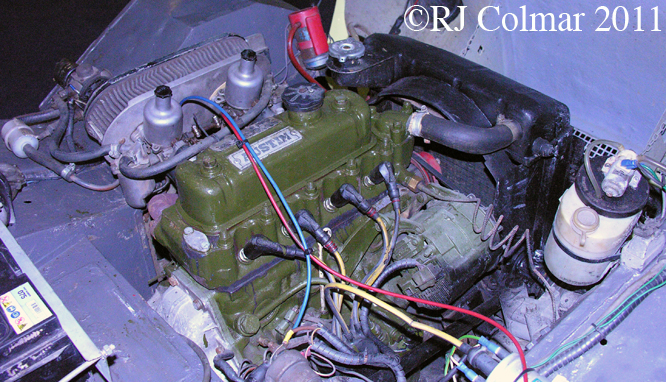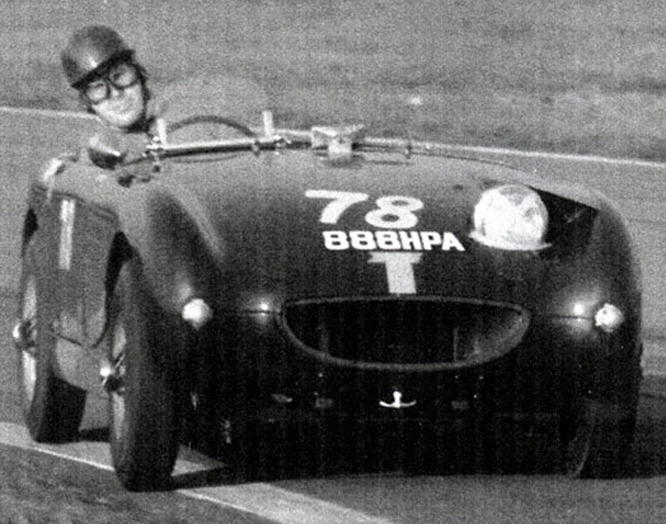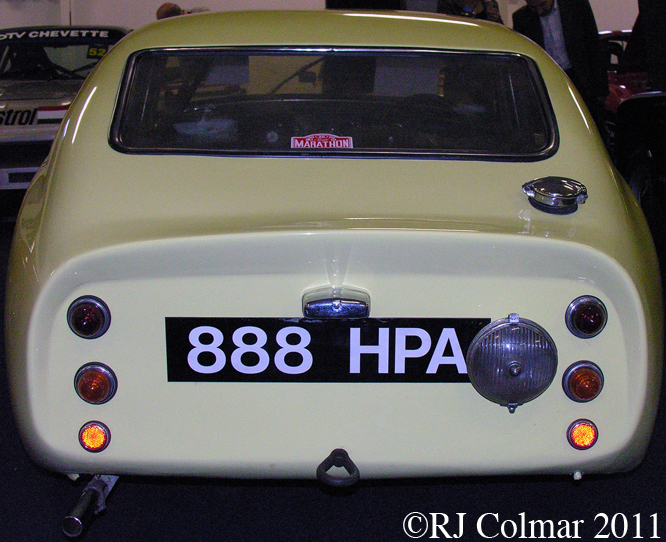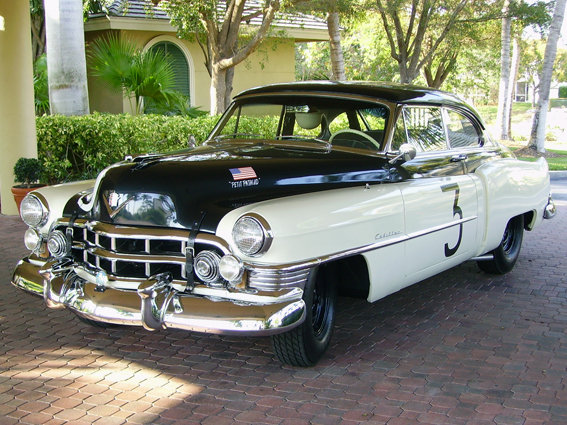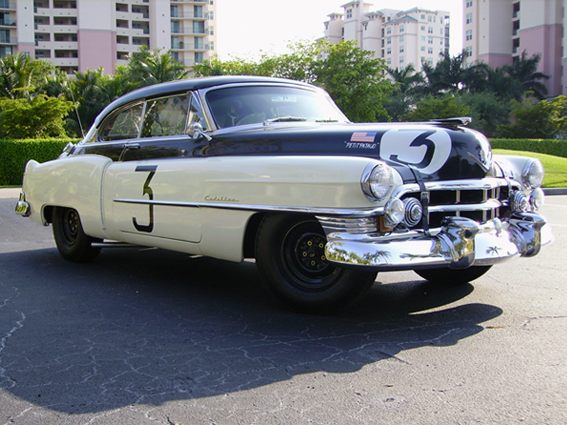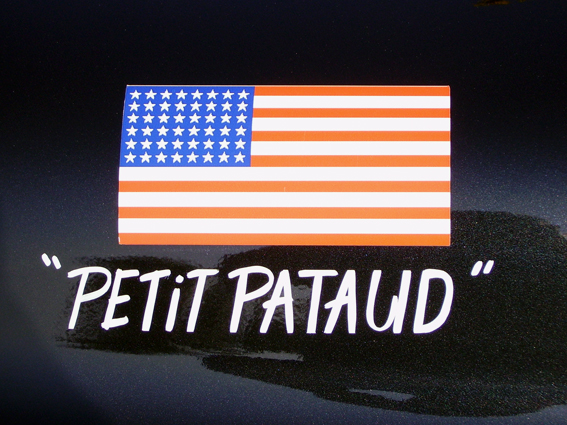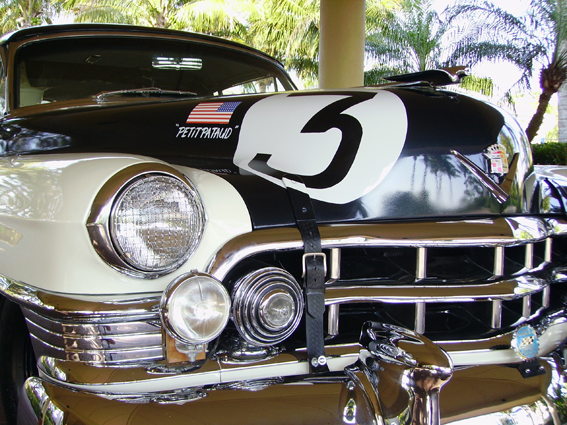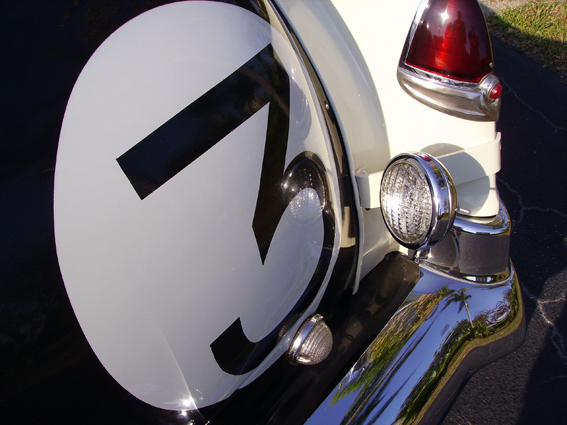In 1961 the Pederzani brother sought to diversify their Tecno company from the manufacture of hydraulic pumps and take advantage of the expanding market for karts. After building the first offset sidewinder karts powered by Parilla motors their karts won the World Championships in 1964, ’65 and ’66.
In 1966 the company started building Formula 3 cars and in 1968 Francois Cevert, Ronnie Peterson and Franco Bernabei won the French, Swedish and Italian Formula 3 championships respectively, driving cars similar to the one featured here.
In 1965 DAF, wanting to prove the value of their Variomatic transmission system first seen in the 1959 DAF 600, bought an Alexis Formula 3 car to which they fitted a variomatic transmission but found the drive belts designed for road use could not cope with the additional stresses found on the race 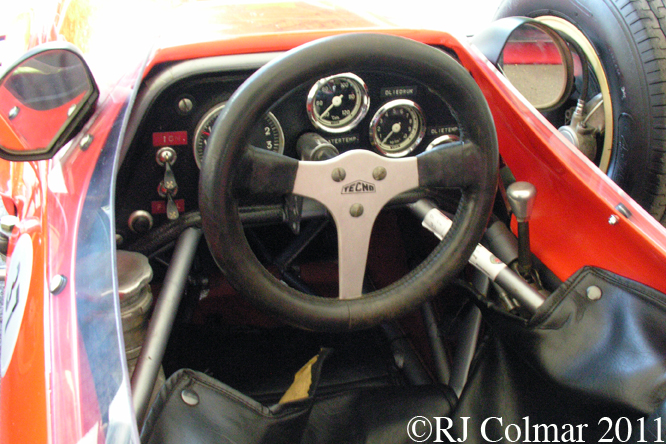 track.
track.
With better belts DAF returned in 1966 with a Brabham chassis for Mike Beckwith with which he scored points and a third place during the season. In 1967 the London Checkered Flag Team ran Gemini chassis for Beckwith and Gijs van Lennep and both scored victories despite the fact that it was becoming clear that the Variomatic was absorbing more power than a conventional gearbox.
For 1968 DAF acquired a couple of Techno’s for Racing Team Halland to run, of which today’s featured car is one, with which Beckwith won his heat at the Monte Carlo F3 meeting with van Lennep following him in second. Beckwith scored a couple of more second places during the season and at the end of the year the team led the final race before the team mates Beckwith and van Lennep took each other out. DAF retired from Formula 3 having made their point.
The DAF Techno’s were powered by 1 litre / 61 cui 4 cylinder Ford MAE motors that could be tuned to develop 120 hp.
The Continuously Variable Transmission (CVT), the earliest concept of which Leornado da Vinchi is credited with, seen here is almost identical to that seen on later Volvo 300 series cars. By the 1990’s CVT belt technology had advanced to completely overcome the power absorption that had been highlighted by the DAF F3 programme. When David Coultard tested a CVT system in 1993 it was immediately so fast that the governing body of Formula One specifically banned CVT for the 1994 season before it was used on the track.
CVT also had a successful competition record in European Rallycross when mounted first in a DAF 66 Marathon Coupé and then in a Volvo 343.
Continuously Variable Transmission is available in a variety of cars today including automatic versions of the Jeep Patriot, Mitsubishi Lancer and SEAT Exeo.
Techno went on to build a championship winning Formula 2 car for Clay Regazonni in 1970 before becoming involved in a Martini Rossi sponsored F1 project for which they designed and built a flat 12 motor with cheap materials that was powerful but too heavy. The car made it’s debut in 1972 in 1973 Chris Amon scored the teams only World Championship point before the haphazardly chaotically organised team folded.
DAF Cars was taken over by Volvo in the mid 1970’s and Volvo became part of the Ford empire at the turn of the century. The Dutch NedCar factory founded in a partnership between Volvo, Mitsubishi and the Dutch Government in 1991 passed wholly in to the hands of Mitsubishi in 2001.
Mike Beckwith, who made a single non championship Formula One start in 1963, made several starts in Formula 2 and a variety of sports car races up until the end of 1970, last photo I can find of him competing was in a Citroen XM production car in 1972.
Gijs van Lennep made 8 Grand Prix starts which included two sixth place finishes including his last GP start in the 1975 German GP. 1972 proved to be van Lennep’s most successful season when he won the British F5000 championship driving a Surtees and also won the Le Mans 24 Hours sharing a Porsche 917 with Helmut Marko covering 5335 kms / 3315 miles a record that stood for 38 years.
Sharing a Porsche 911 RSR with Herbert Muller Gijs won the last Targa Florio in 1973 and in 1976 Gijs won Le Mans for the second time in his last professional race sharing a Porsche 936 with Jacky Ickx.
Thanks for joining me on this ‘Two Pedal Open Wheel’ edition of “Gettin’ a li’l psycho on tyres’ I hope you will join me again tomorrow. Don’t forget to come back now.

